Kaas ~ Flowering Plateau
Kaas, a UNESCO world heritage site now, is famous for the wild flora that beautifies the whole plateau after the monsoon rain retreats in this area.
The whole plateau gets different floral carpets separated in the span of 7-10 days.
The endemic flowers from the place also bring life to the different insects which act as important pollinators for these flowers to continue life year after year.
This particular year, even after the monsoon retreat, there was heavy rainfall at this place and hence the flowering was not as it normally was previous years.
The below 2 pages of photographs try to showcase the beauty of these flowers, their pollinators/insects and general landscapes.
The photographs were taken on several visits to the place, alone and with friends couple of times.
Thank You
My friends who accompanied me and were helping with external flash, IDs, spotting holding umbrellas and what not !
The website http://www.flowersofindia.net/ that documents most of the flora found in India.
The forest department and locals, who are working relentlessly to manage the crowd and more importantly the place for future.
They have to work in harsh conditions, managing VIPs/politicians and their families coming for a picnic visit, and worst, the educated unruly crowd that hardly respects the place and rules !
Last, but not the least, Thank you for visiting and spreading the word about the beauty of kaas and its inhabitants. I hope you be a responsible tourist/photographer/nature lover who spreads the word about the place and also enjoy it responsibly !!
Equipments: Canon 5D Mark II, Canon 7D, Canon 24-105mm, Sigma 150mm Macro, Canon 580 EX-II Flash, Tripod.
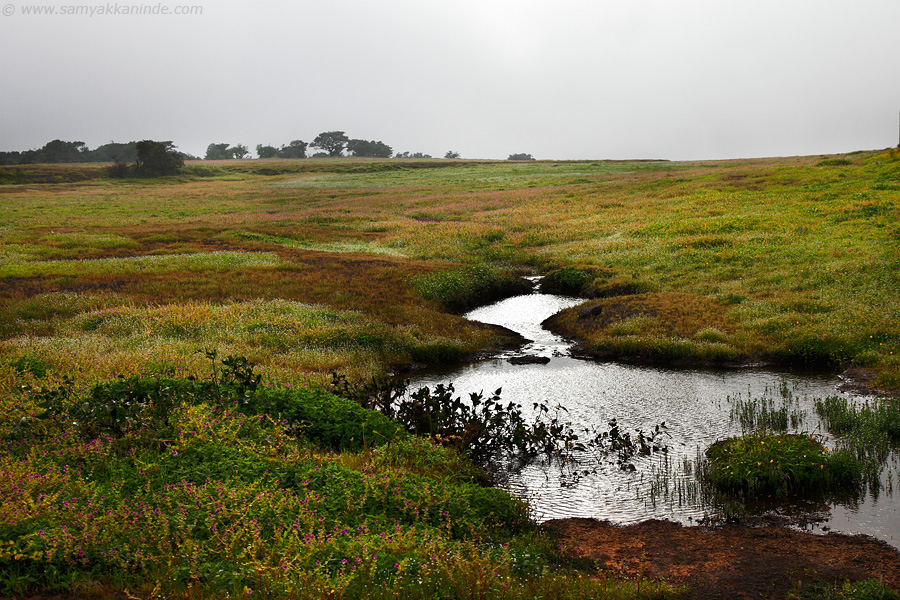
The maximum of kaas plateau is made up of the porous laterite rock as seen here. It has a very thin layer of soil that supports this vegetation of plants and grass that grows here after the rains. The small streams keep flowing around the place draining the water.
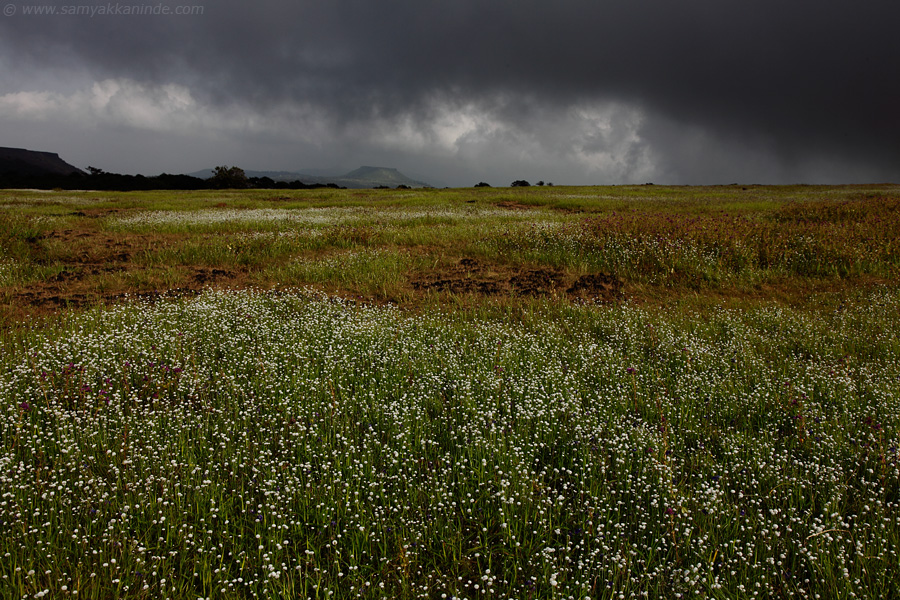
The weather change at the plateau happens in a blink. The winds constantly running at high speeds give way to nice blue sky or bring about the dark clouds and then unrelenting rain all the time in this season. The flowers and micro organisms take all that beating all the time.
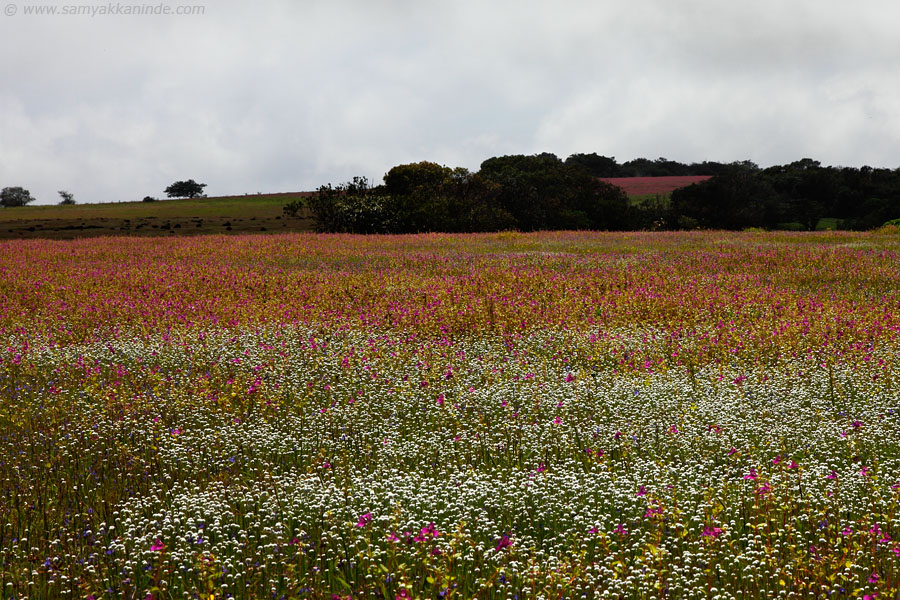
The whole plateau has interwoven beautifully by the different flowering plants and hence the different coloured flowering carpets as seen here.
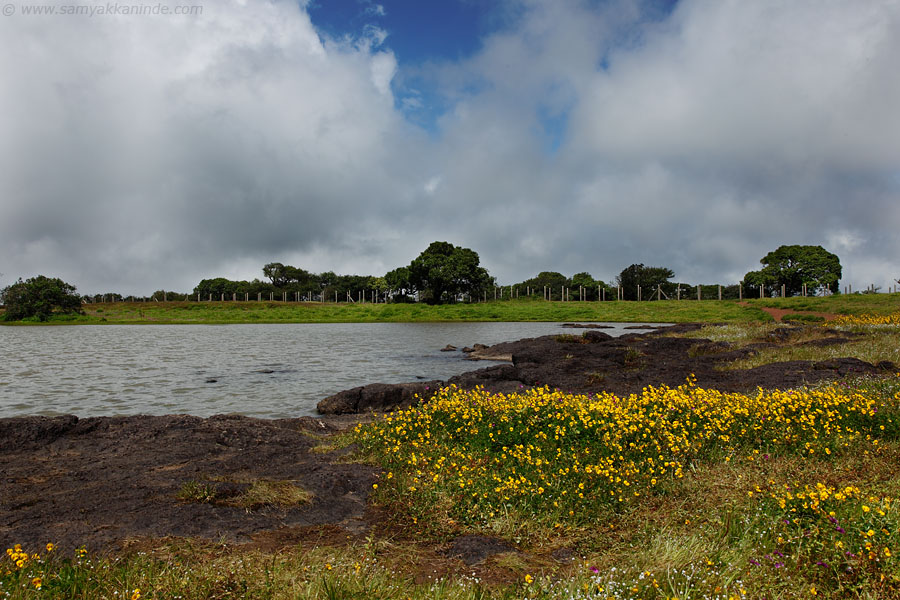
There is a small pond on the top of the plateau surrounded by the flowering plants. Again, a trail as seen here is fenced on both sides for tourists to restrict the tourist movements.
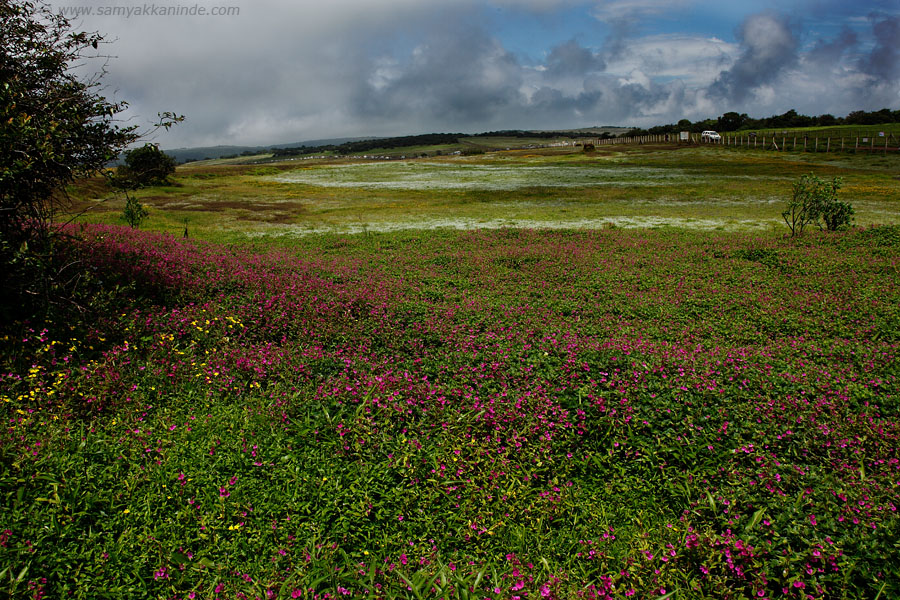
Another view of the kaas landscape. Seen here is the fences by the roadside created by the forest department to control the movement of vehicles and people on sensitive plateau. Also seen are the long line of vehicles at the far end.
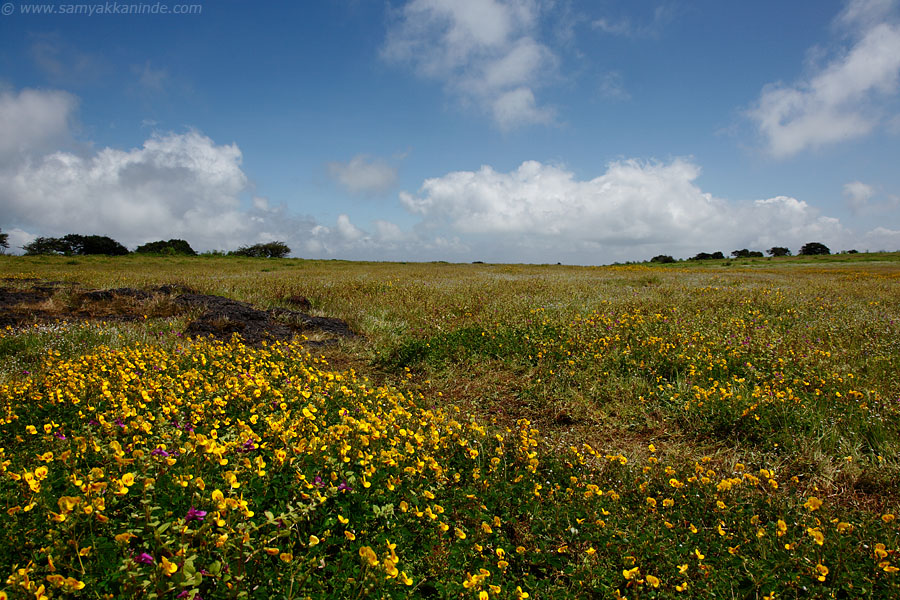
Kaas landscape decorated by the smithia spreading this yellow carpet.
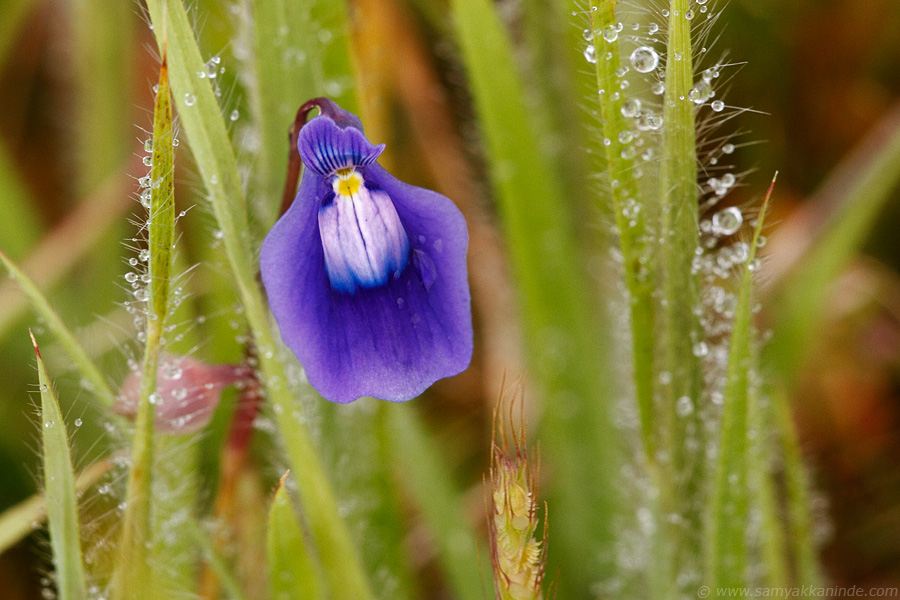
Utricularia pupurensis aka Seeta's tears flower. This flower is a voracious insectivorous plant. But, unlike other insectivorous plants, you can not see the action. This happens under the ground where this plant is evolved as to consume the microorganisms from underground to keep up with its growth. It is said that, while Seeta was abducted by Raavna, her tears fell over these flowers (the yellow on the petal) and hence the common name.
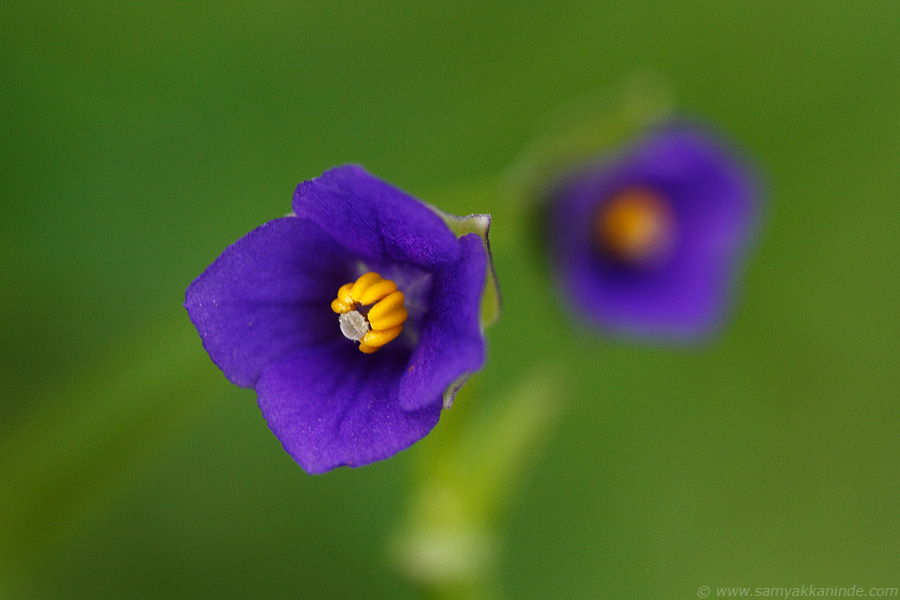
Exacum pumilum (marathi : Jambhali Chirayat)
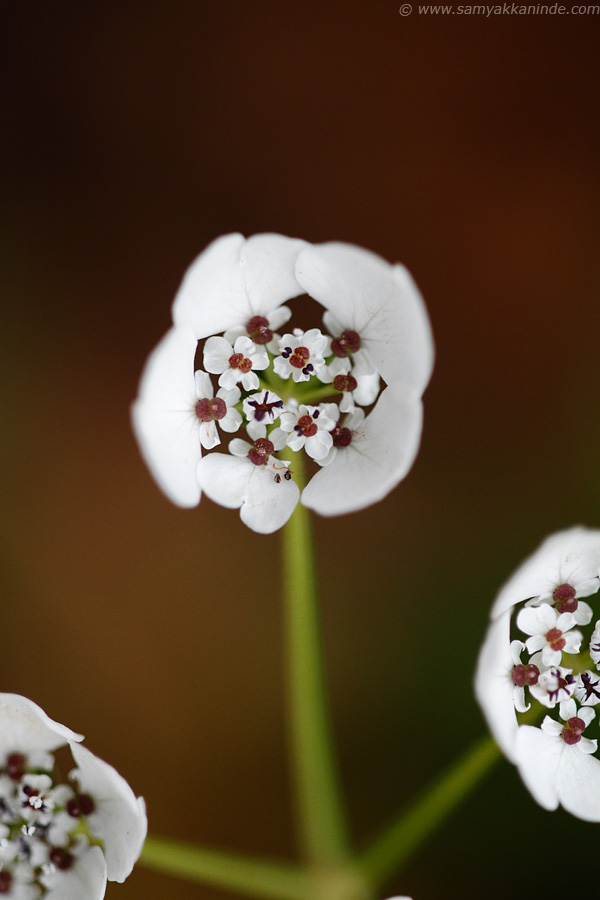
Pinda concanensis / konkan Pind (marathi : Pand)
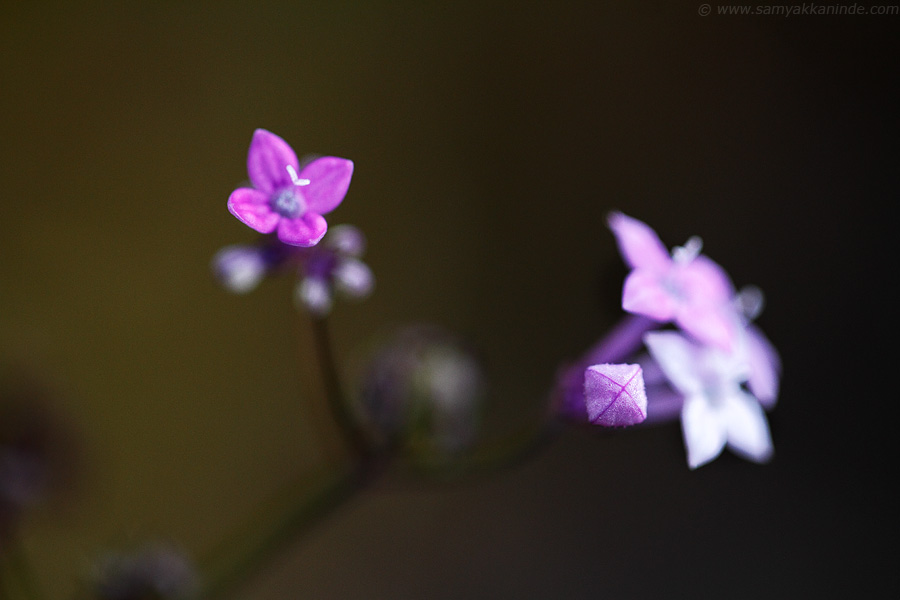
neanotis lancifolia / Starviolet (Marathi : Taraguccha).
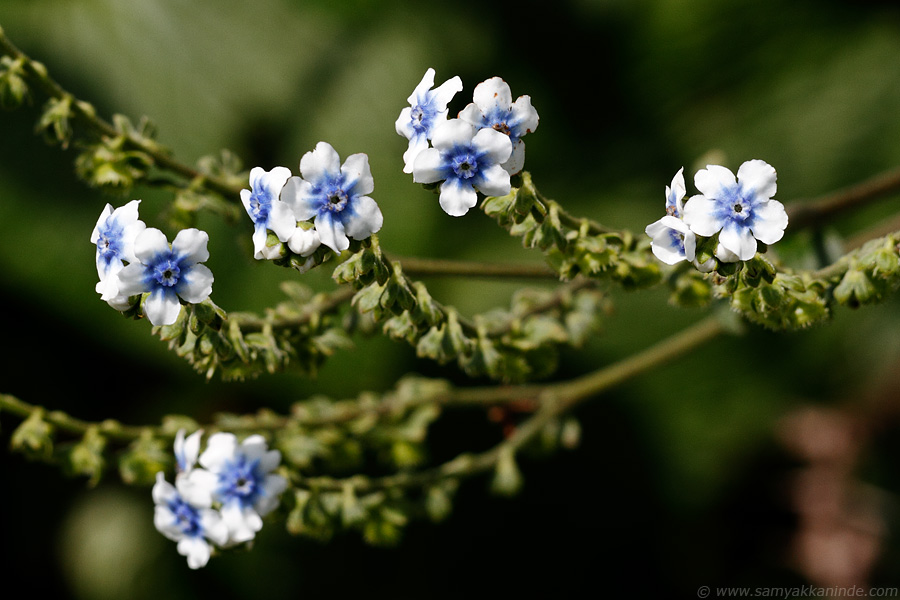
paracaryopsis coelestina / Common Hill Borage (Marathi : Nisurdi)
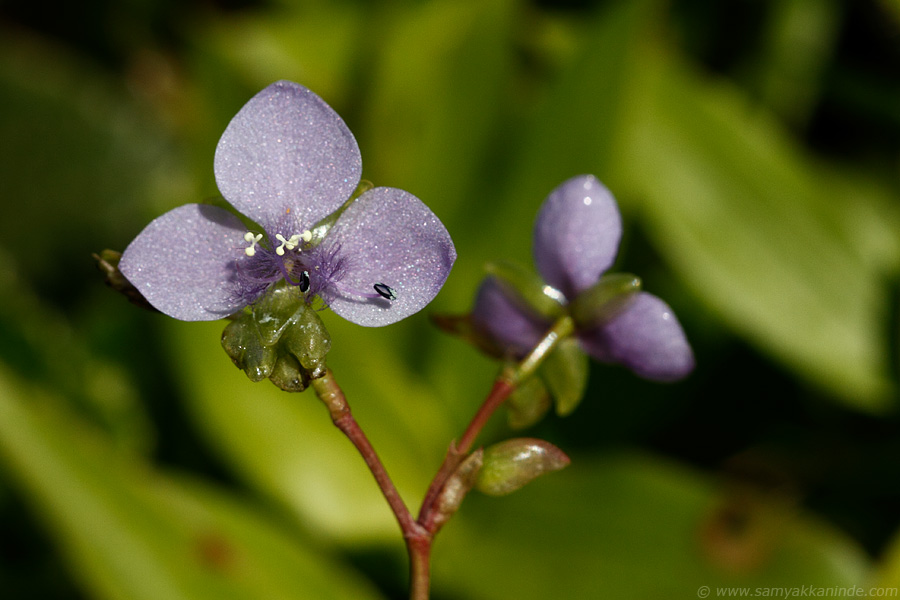
Murdannia simplex (Marathi : Nilima)
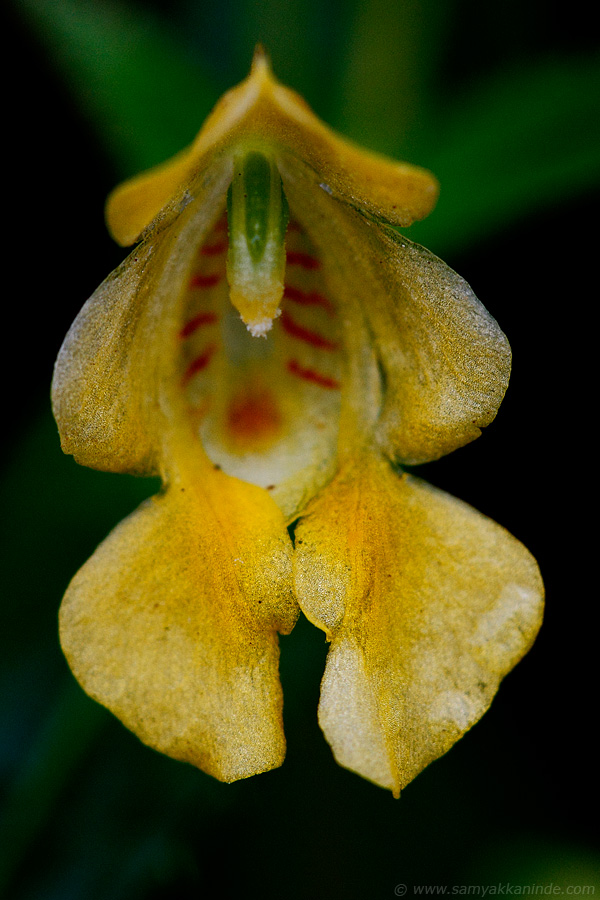
Impatiens dalzelli (Mararthi : Piwala Terada)
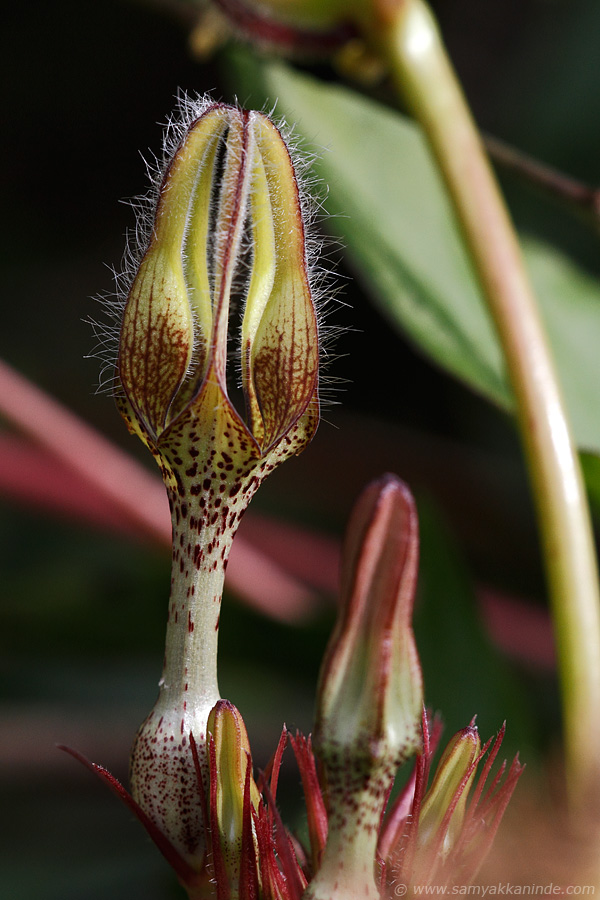
ceropegia vincaefolia (Marathi : Kandil Kharchudi) - This is critically endangered plant and rare to see at the plateau. They are the insect-trappers for obvious reasons of pollination. The top umbrella shape of the flower opening allows only particular kind of insects to get in. Once they are in, they get trapped as the innserside of the tube has unidirectional hair kind of structure which does not allow the insect to get out. After the insect gets pushed further down towards base, the flower droops down to release the insect after achieving its goal of pollination. You can see the unopened flower in the background too.
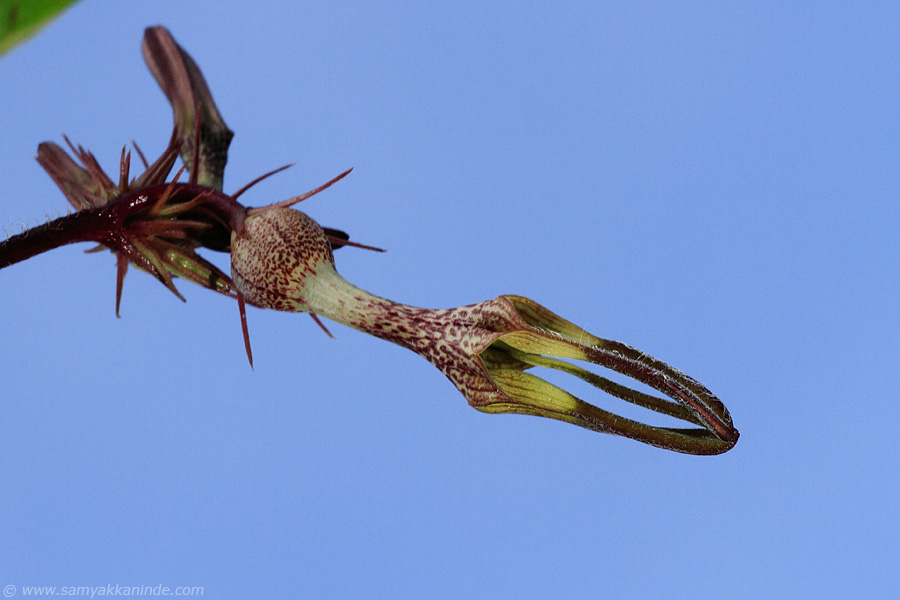
ceropegia vincaefolia (Marathi : Kandil Kharchudi) - This is critically endangered plant and rare to see at the plateau. They are the insect-trappers for obvious reasons of pollination. The top umbrella shape of the flower opening allows only particular kind of insects to get in. Once they are in, they get trapped as the innserside of the tube has unidirectional hair kind of structure which does not allow the insect to get out. After the insect gets pushed further down towards base, the flower droops down to release the insect after achieving its goal of pollination.
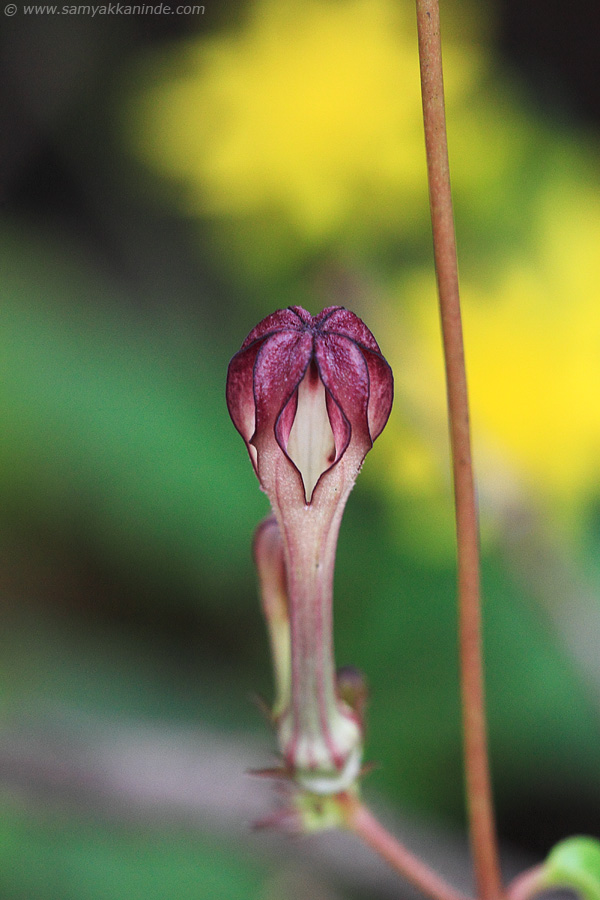
ceropegia media (Marathi : Medi Kharchudi) - This is also from the same family of Ceropegia as above where they take insects as hostage inside their tuber to achieve the goal of pollination through insects.
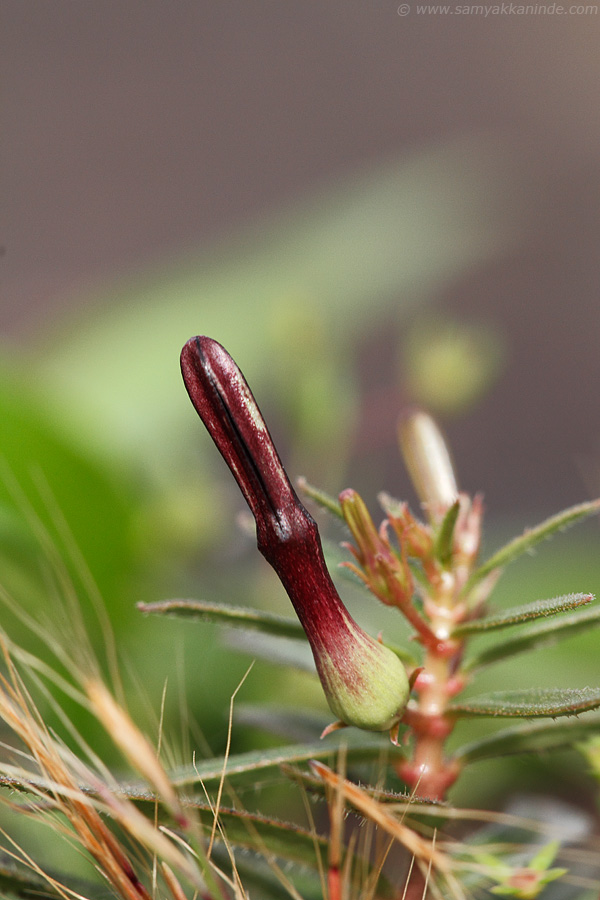
ceropegia jaini (Marathi : Jaini Kharchudi) - This is also from the same family of Ceropegia as above where they take insects as hostage inside their tuber to achieve the goal of pollination through insects. It has nicely arranged five linear petals like others that you would see in the next photograph that opens up for pollination.
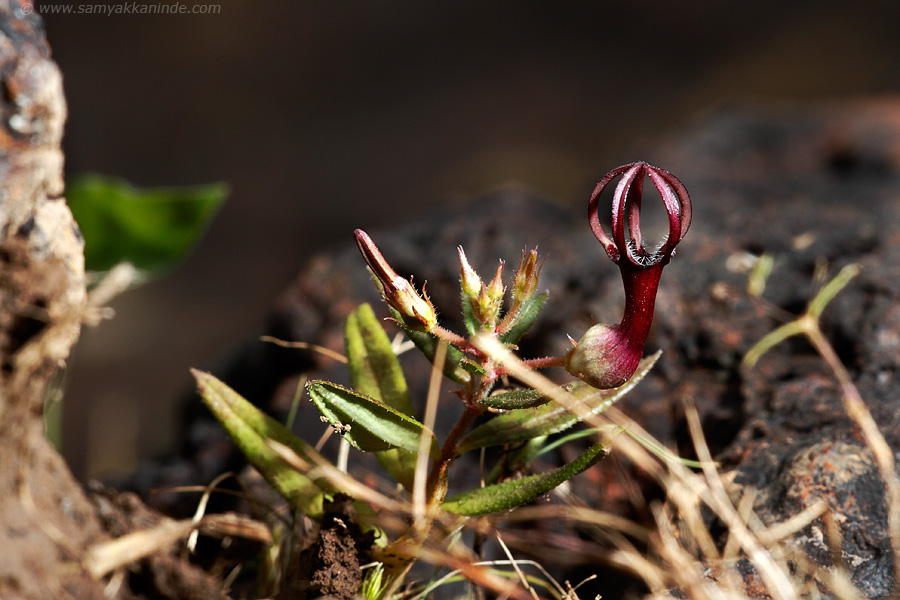
ceropegia jaini (Marathi : Jaini Kharchudi) - This is also from the same family of Ceropegia as above where they take insects as hostage inside their tuber to achieve the goal of pollination through insects. It has nicely arranged five linear petals like others that opens up for pollination.
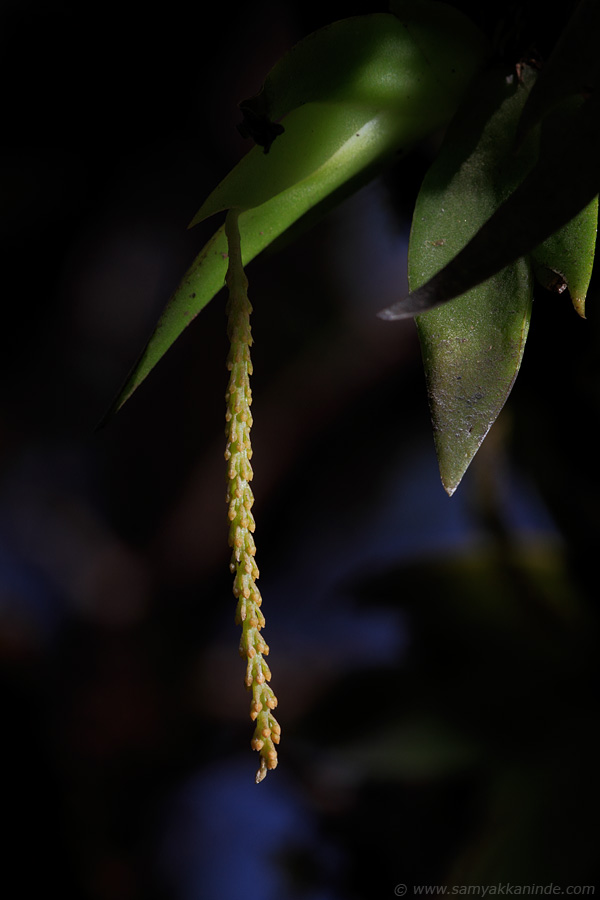
oberonia family (Marathi : Chapati Amari) - This is a one of many type of orchids that are found here in kaas. The exact ID of this is either oberonia recurva or oberonia falconari that would be decided only when we see the flowers. This is offcourse was found in the non-flowering stage.
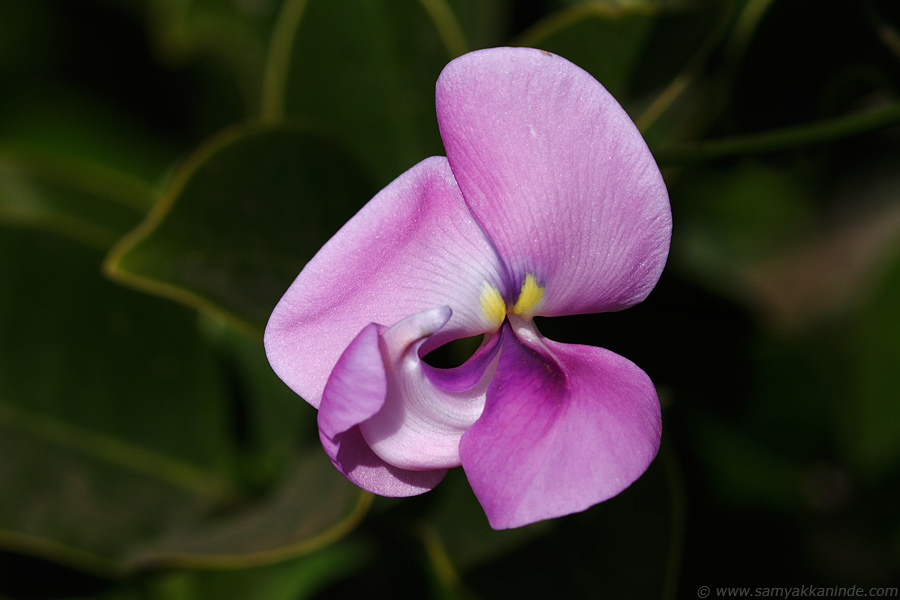
vigna vexillata or "Elephant's trunk" (Marathi : Halunda) - This flower mostly has two horizontal and two vertical petals and one half moon shaped petal in the centre. As soon as the insect lands on the central petal, an elephant trunk like projection comes out bathing the insect with its pollen. This is how the pollination of this flower is achieved.
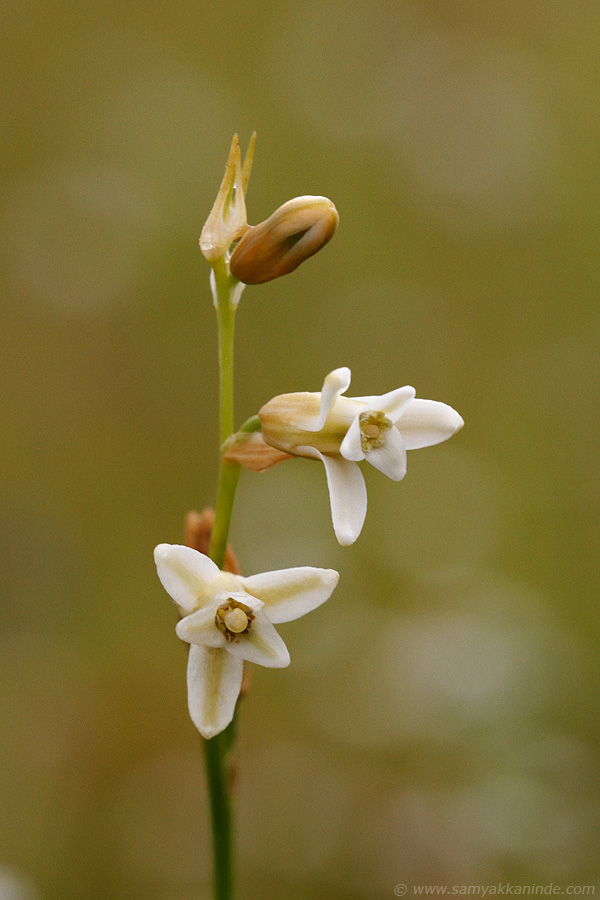
Dipcadi montanum - Dipcadi is an erect bulbous plant, 20-30cm tall. These normally are seen above the rest of the flowering plants due to more length.
Do not forget to write about how you liked them below. Thanks for the time spent here.




